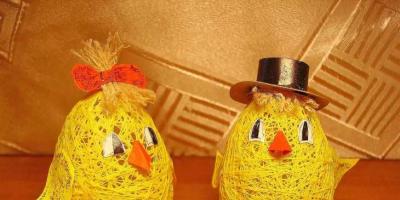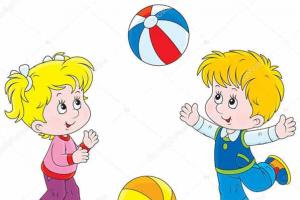Champagne is a drink that accompanies any special event. It has unique properties. For a long time, this alcoholic product was available only to aristocrats and members of the nobility. It is associated with Olivier salad and aromatic tangerines. To respect the creator of this wine, Pierre Perignon, sparkling wine lovers established a holiday in honor of the drink. The birthday of champagne is celebrated on the day of its first tasting - August 4.
history of the holiday
Pierre Perignon is a monk from Hautevillers Abbey. The latter was located on the territory of the city of Champagne. The man managed a farm related to food provisions and a cellar. In his free time, Pierre conducted winemaking experiments. The monk offered the sparkling drink to his brethren in 1668, surprising the tasters. The wine in the glasses bubbled and foamed. Air currents rose from the bottom of the dish. The inventor received a lot of praise. The popular luxury champagne brand Dom Perignon was later named in his honor.
The name of the drink itself comes from the name of the area in which the abbey was located. Another invention of the monk was the cork plug, which replaced the oiled stick. The technology for producing the sparkling drink became widely available only in 1718. It was described by the canon of the Reims collection from the Abbey of Fedino. The drink went on sale ten years after this event. The first company to produce champagne was Ruinard.
The product gained wide popularity in the second half of the nineteenth century. Russian winemakers have achieved great success in this matter, receiving several prestigious awards at Parisian exhibitions. The French were unhappy with the competition. This was the impetus for the writing and adoption of a law stating that only those drinks that were obtained at Champagne wineries in compliance with strictly regulated rules could be called champagne.
Technical conditions of the stage for the performance of the Sevastopol musical crew “Primorsky Park”.
Scene.
Four musicians with large instruments work on stage. The minimum size of the work area is 6x3 meters.
The stage must be protected from the sun and precipitation by awnings.
When installed outdoors, a podium must be equipped that can withstand the required load. Installation of equipment on the ground is not allowed.
The surface of porcelain stoneware, paving slabs, asphalt is covered with a soft floor covering (rubber, carpet).
The stage must be equipped with a grounded power supply of 220 volts. Standard European sockets with grounding contact.
Concert lights must be installed on the stage.
Location of musicians and equipment (view from the hall, left to right):
Vitaly Vorontsov (guitar, saxophones)
Guitar combo on a stand;
A stand with a microphone that picks up sound from the commander;
Bar stool with adjustable height (plays while sitting);
Guitar stand;
Saxophone stand;
Stand with a microphone for picking up a saxophone;
Music stand;
Place for a guitar floor processor;
Monitor;
220 volt.
Alexander Zu (double bass)
Bass combo on a stand, with the ability to reach adjustments during a concert.
Place for a musician with a double bass;
Place for bass processor;
Place for a double bass (carpet is desirable);
Stool or box (acoustic double bass is leaned against at an angle of approximately 45°);
Stand for electric double bass;
Music stand;
Crane stand with vocal microphone;
Monitor;
220 V.
Vitaly Zamyatin (frontman, vocals, drums)
Attention!
The drum kit is mounted for playing while standing!
It is brought to the front of the stage, in line with the musicians.
Installed on rubber flooring or carpet.
Bass drum;
The snare drum is mounted on a standard stand mounted in a socket on the kick drum (usually used for violas);
Three racks for plates;
Hat stand;
Tom on high legs;
Bass drum pedal;
Crane stand with vocal microphone;
Monitors 2 pcs (L+R).
Max Perov (trumpet, keyboards)
Keyboard stand;
The pipe is suspended on the extension of the cross leg of the stand, the sound is picked up by a microphone-clothespin (your own);
Space for floor processor for pipe;
Music stand;
Monitor;
220 V.
Backline and sound suggestions.
Bass combo (with tube preamp preferably) 150-350 W with D.I. Out.
Guitar combo (with a tube preamp, preferably) 50-300 W.
Two-channel D.I.Box (keyboards).
Serviceable, tuned drums and stands, a set of keys for adjustment.
Vocal microphones preferably Sinheiser or Schur.
A set of necessary microphones for drums.
Microphone for picking up a guitar from a combo.
Microphone for capturing the sound of a saxophone (condenser).
Cable and commutation kits of the required length.
Any changes on stage after the completion of the sound check and touching the instruments are prohibited!
The presence of strangers in the backstage area is prohibited!
Selection of FOH channels is at the discretion of the director.
Necessary treatments:
Vocals - spatial, compressor;
Backing vocals - spatial;
Saxophones - spatial;
Barrel - compressor;
Bass - compressor;
Master - compressor, limiter.
Sound.
Request to the sound director:
The basis of the sound is the baritone of the soloist. Vocals should be softly compressed, with classic spatial processing for live performances. Without mumbling at low and whistling and distortion (shh.. shh..) at high.
The sound of the guitar is warm, jazzy.. Convex in the middle register, without clanging or squealing.. With tidy lows..
The trumpet sounds with its own processing. In a classic jazz sound.
The balance of trumpet and guitar in the solo is even by ear.
The keys are tonal support pads.
Rhythm section - iron and worker play in jazz techniques with a wide range.
The kick and tom are tightly compressed. With punch.
Double bass, without high clanging. Tight compression and high input sensitivity. Attack and volume dynamics are created by the bassist's fingers. The “poke” of the kick drum and bass should be moved apart in timbre. Creating a field saturated with acoustic groove.
In the overall mix, the vocals are always in the foreground.
Attention to the guitar and keyboards so as not to “stifle” the vocals.
Living conditions.
The dressing room is provided with an iron and ironing board.
Drinking water bottle.
Kettle, brewed tea and coffee. Sugar. Milk or cream. Upon arrival of the musicians, a plate of sandwiches (12 pcs.). At the end of the performance there will be a hot lunch.
The dressing room should be equipped with chairs or sofas to seat 6 people. Not plastic! A low table is desirable.
Necessary lighting and 220 volt network are required.
In open air conditions, dry paths or walkways are laid from the dressing room to the stage.
A toilet, washbasin and shower must be accessible.
Security post at the dressing room and instruments. Badges and bracelets for access to the stage.
Transport.
Bus or minivan with at least 8 seats.
If the distance from the disembarkation from the vehicle to the stage is more than 50 meters, cargo trolleys, an electric car or loaders are required.
Interaction:
Vitaly Zamyatin - +7 978 844 56 15, administration, finance.
Alexander Zu - +7 978 814 01 91, technical consultations.
 August 4 is Champagne's birthday.
August 4 is Champagne's birthday.
And not just a birthday, but an anniversary - 350 years.
The glory of the discoverer belongs to the French monk Pierre Perignen. In his honor, a monument was erected in the province of Champagne and one of the most famous and expensive brands, Dom Perignon, was founded. The story of the discoverer is quite banal. The monk was responsible for the safety of wines in the cellars of the Benedictine monastery. Having discovered several bottles of fermented wine, he opened them to pour them out, but for some reason he decided to take a sip of the sour wine. Maybe he was hungover. They say that after tasting it, he shouted: “Hurry here, I’m drinking stars!” After this incident, the monk began experimenting seriously. He took different grape varieties, blended them, and used different aging times and temperatures. And on August 4, 1668, Pierre Perignon presented the first real champagne to the abbot of the monastery. By the way, another invention of the monk was a cork made from the bark of a cork tree, which replaced the oiled stick. He also came up with a way to serve champagne - in tall thin glasses, which allows you to fully reveal the taste and aroma of the drink. Only 60 years later, in 1728, the official trade in sparkling wines began in France, and in 1729 a champagne house called Ruinart was established.
The development of sparkling wine recipes in Russia took place a little later than the French experiments. The first in this area were the Cossacks living in the village of Tsimlyanskoye. They own the technology for making the sparkling wine of the same name.
Russian sparkling wines gained worldwide fame in 1900, when at a festival in France the sparkling wine of Count Golitsyna took first place, surpassing French champagne in its quality. Golitsyn's sparkling wine recipe was later used to create Soviet Sparkling Wine.
Here are a few more traditions associated with champagne:
- Any modern sea vessel is “baptized” with champagne before launching. The honor of becoming the first ship to be christened with champagne went to the ironclad warship Maine in 1890.
- During the award ceremony for the winners of the famous Formula 1 race, all race winners are necessarily doused with champagne. Traditionally, the supplier provides the organizers with eight bottles of sparkling wine. Four are put on the podium awaiting the winners. And four more are considered spare.
- It is customary to wash newly purchased cars with champagne, and specifically Brut. You need to try to shoot the cork so that it definitely flies over the car.
- Champagne is a mandatory attribute of weddings. In order for a young family in the house to have happiness and prosperity, after the bride and groom have drunk a festive glass of sparkling wine, they need to throw these glasses back over their shoulders. The glasses must certainly break and then everything will be fine for the young people.
- And of course, what would New Year be without champagne? One of the main rituals of New Year's Eve is to write down a secret wish on a piece of paper or a napkin, quickly burn the note, and pour the ashes into a glass of sparkling wine and drink while the chimes are striking. If you managed to do everything, your wish will come true!  August 4 -Mustard day.
August 4 -Mustard day.
The day of one of the most popular condiments is coming - Mustard Day. This tradition began in 1991 in the USA and has become an annual event throughout the country. The holiday is celebrated annually on the first Saturday of August and this year falls on the fourth of August.
Many cities host mustard festivals, complete with free hot dogs and hamburgers. On this day, you can see hot dogs being distributed to people on the street near large stores. The holiday program is especially rich in Middleton, where the National Mustard Museum, which is the initiator of the holiday, is located.
Mustard tastings are held for everyone, where you can try honey, spicy, hot, creamy and many other types of mustard.
The holiday is invariably filled with entertainment intended for people of all ages, concerts, games and competitions. On meat or fish, on jellied meat, on a sandwich or in okroshka, mustard is good everywhere.
The ancient Greeks believed that mustard seeds had magical properties. They added them to love potions and medicinal broths. In magical potions, mustard was mixed with Indian seeds and other edible flowers, thus trying to achieve the desired effect. Mustard seeds were also widely used in Ancient Rome. Thanks to the Romans, other peoples learned about mustard. It was from the Roman Empire that mustard appeared first in Germany and then in England. During the Middle Ages in northern Europe, it was believed that a few mustard seeds sown around a house could protect its inhabitants from evil spirits.
Since the 9th century, the French have been actively eating it and adding it to sauces. Slightly sweet Dijon mustard is still considered one of the foundations on which the French culinary school rests. Some French cities have introduced high fines (including imprisonment) for selling poor quality mustard. And its taste was assessed by a special commission of connoisseurs of this delicacy.
Sour and sweet, with honey, pepper, cheese, beer, wine, vodka. With garlic and olives, with all the berries, there is even chocolate and nut mustard. In total there are over five thousand different names. You can always choose the one that suits your liking! Happy holiday!  Tula Gingerbread Day.
Tula Gingerbread Day.
On August 4, the Annual Interregional Festival “Gingerbread Day” in Tula will bring together thousands of guests from different parts of the country. The venue for the gastronomic festival is the Tula Kremlin. Starts at 11.00, ends at 20.00.
Residents and guests will be introduced to the history of the origin of gingerbread and the secrets of its baking. A wide fair “Tula Region – Gingerbread Paradise!” will also take place here, where you can buy gingerbread, souvenirs, handicrafts and sweets. Farmers from the Tula region and Russian regions will also present their natural and tasty products.
At the festival, guests will be taught the art of properly boiling a samovar and treated to delicious Tula tea. Educational master classes, in which you can show your culinary talents and learn a lot, will be waiting for everyone. Children and adults will be able to take part in painting gingerbread cookies and tasting sweets, of which there will be plenty. There will be a show tournament “Gingerbread House”, a championship in high-speed boiling of samovars “Tula pressure cooker”, “gingerbread” checkers and a wide variety of entertainment, competitions, quizzes, exhibitions, master shows, flash mobs.
In the open-air cinema you can watch films with a cup of tea and gingerbread.
It’s good that there is a special day to get acquainted with the famous Tula gingerbread!  Goat's milk cheese day.
Goat's milk cheese day.
Among the many days in the calendar dedicated to cheese, this one is especially beautiful, since it is dedicated to a very tasty and healthy product.
Goat cheese is made from natural goat milk. There are hard, soft and curd varieties, as well as varieties with soft white mold. The taste of cheese depends on many factors: fat content, animal nutrition, goat breed and manufacturing technology. The recipe for making the simplest goat cheese is simple: after souring, the milk is curdled, the whey is drained, and the remaining curd is squeezed out and placed under a press. A properly prepared product is particularly tender with a noticeable spicy note. Due to different additives and preparation technologies, cheeses have different textures and tastes. If we compare them with cheeses made from cow's milk, then goat cheeses are lower in calories and contain less fat, which allows them to be classified as dietary.
Soft goat cheese can be stored for 2 weeks, while hard goat cheese will retain its beneficial qualities for 3 months.
The benefit of goat cheese lies in the high content of lactic acid bacteria, which makes this product practically a medicine. These microorganisms are valuable because they prevent the proliferation of pathogenic bacteria. The antibacterial properties of goat cheese are identical in effect to the anti
biotics. Scientists have proven that goat milk cheese contains about a hundred types of beneficial bacteria that can resist viruses and microbes.
Goat cheese is digestible much better than cow cheese and is a hypoallergenic product. Its high calcium content makes it a particularly valuable product for people suffering from diseases of bones and joints. It is also necessary for the development of children's bodies, since it actively participates in the formation of growing bone tissue.
A slice of goat cheese on a piece of fresh bread, washed down with a mug of goat milk - that’s happiness!
All over the world, not a single celebration is complete without a glass of ice-cold champagne. It was drunk by kings and merchants, aristocrats and hussars. Pushkin himself mentioned champagne in his novel Eugene Onegin, and the famous composer Johann Strauss wrote a polka in his honor. Perhaps this magical sparkling drink, like no other, has earned the right to its own holiday. And there really is one - it’s customary to celebrate champagne’s birthday August 4.
How champagne was born
Many countries claim to bear the proud title of the homeland of this sparkling wine. The Swiss assure that they also have a village called Champagne, and foamy drinks were produced there back in the 10th century, when there was no trace of the monk Perignon. The Italians interrupt them, arguing that sparkling wines were already served at the court of the Roman emperors a couple of thousand years ago, so the first champagne probably appeared in Italy. And Cypriots claim that the varietal grapes from which the best champagne is made were taken from Cyprus by the French crusaders.
However, the French, listening to such disputes, only grin. They firmly know that Champagne Day is their holiday, and in the city of Epernay, in the province of Champagne, as proof of this, a monument to Pierre Perignon was erected as the discoverer of this divine drink.
And it was like this. In one of the Benedictine monasteries in the center of Champagne, the monk Perignon was in charge of the cellar, including the wine reserves. One day he noticed that some of the white wines had fermented, but the new drink had a pleasant smell and many small running bubbles. Father Perignon began experimenting with grape varieties, the thickness of glass in bottles, and different corks. And according to legend, it was on August 4, 1668, after dozens of years of trial and error, that he received the ideal wine - light, sparkling, aromatic - and presented it to the abbot. This was the first real champagne.
By the way, the monk’s merit is not only in inventing the drink - he was the first to suggest tightly sealing bottles with cork oak bark and serving sparkling wine in thin, tall glasses so that its unearthly taste and aroma could be revealed in all its glory.
Traditionally in France on this day it is customary to open a bottle of good champagne and drink it with good friends, enjoying the play of bubbles in the glass and slowly savoring the drink.
And in order to fully experience the whole bouquet and appreciate the efforts of the winemakers, you need to drink champagne correctly. Here are some French secrets:
- wine should be stored and cooled horizontally;
- open champagne without shooting so that the bubbles do not evaporate;
- at the moment of uncorking, you need to rotate not the cork, but the bottle;
- pour the wine carefully, directing a thin stream to the edge of the glass;
- It is customary to fill a wine glass three-quarters full;
- Champagne is enjoyed with good cheese, white meat or salads.
A high-quality foamy drink retains bubbles for several hours after it is opened, and the larger they are, the more elite the wine is considered.
Happy Champagne Day everyone!









